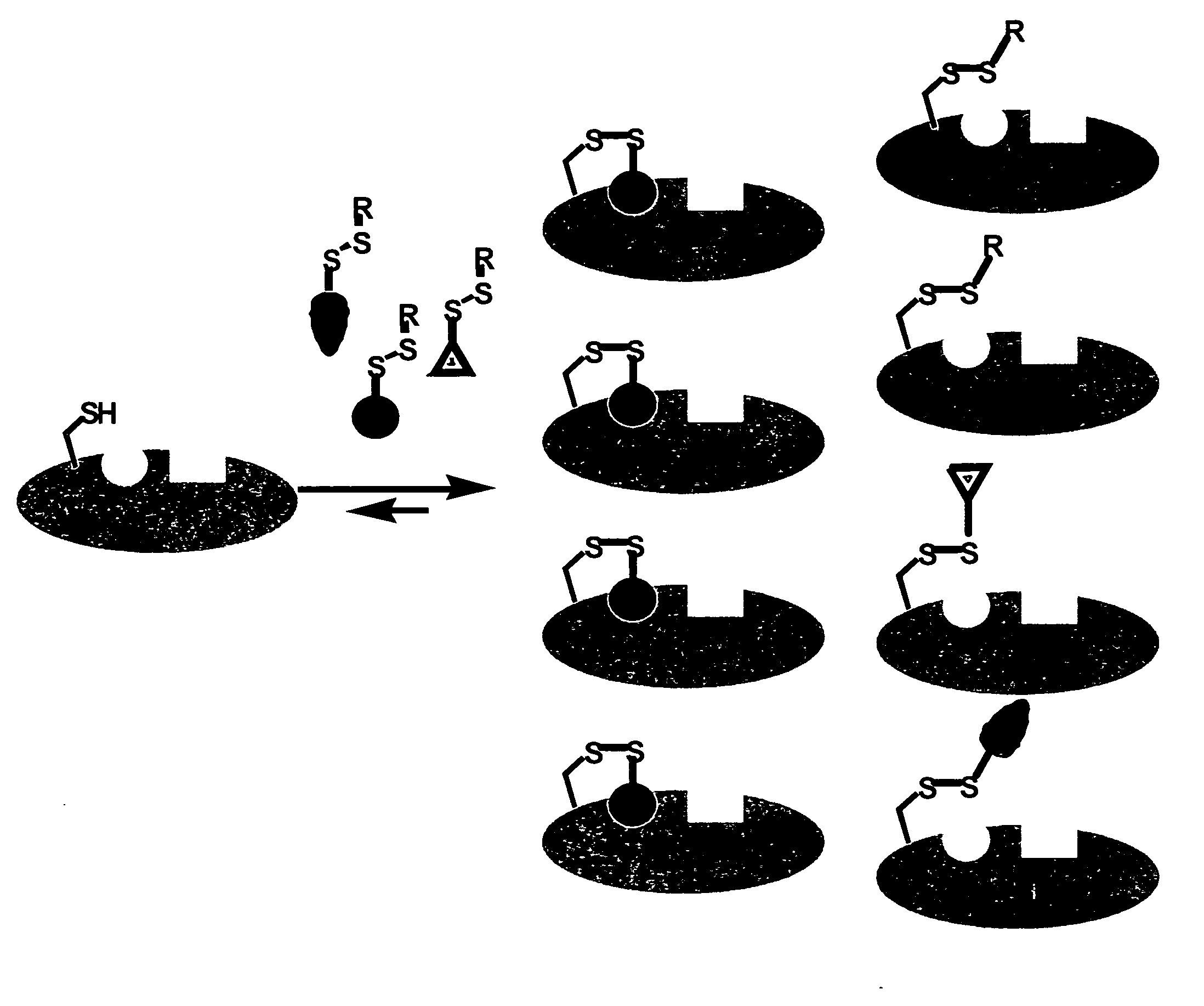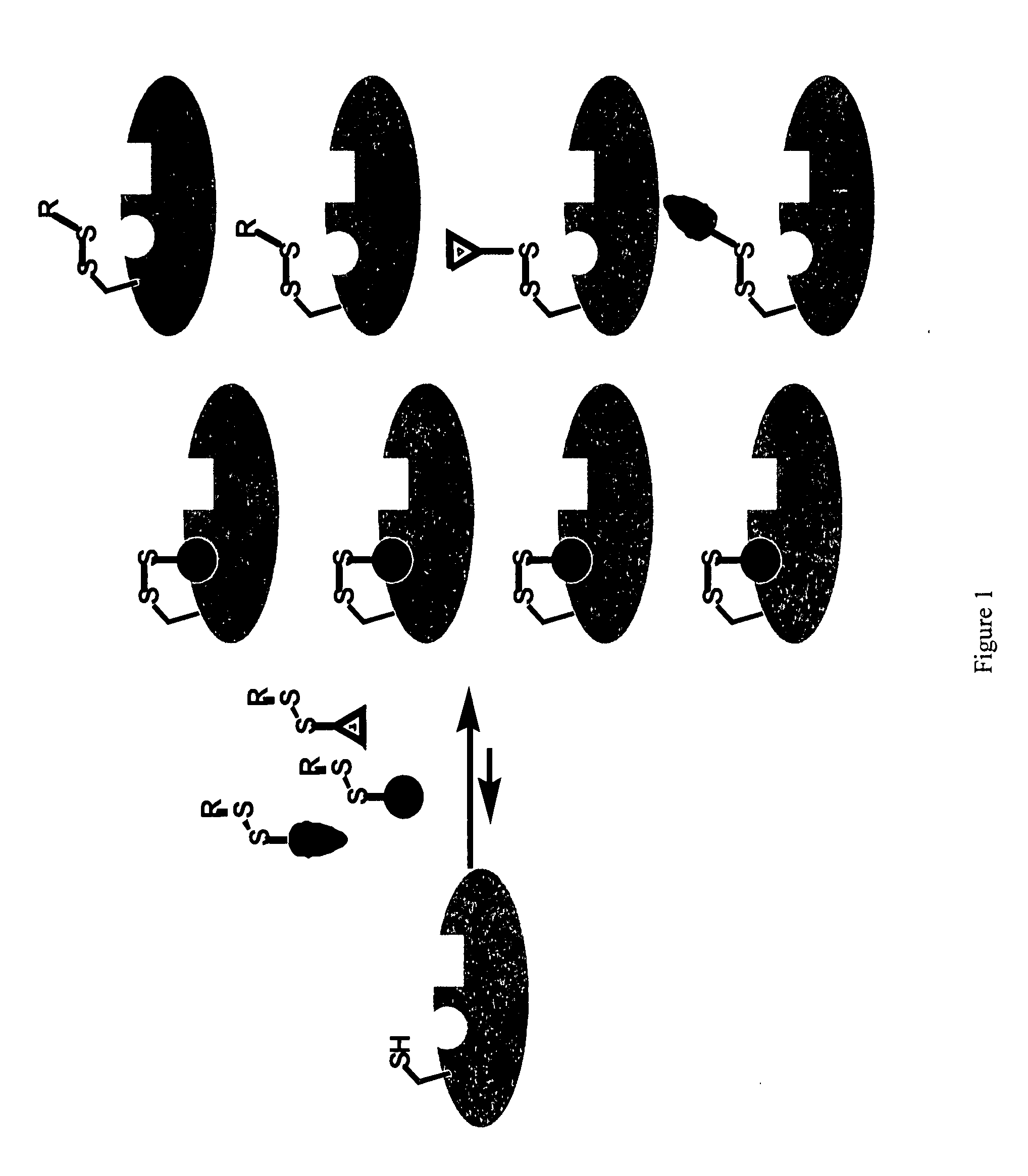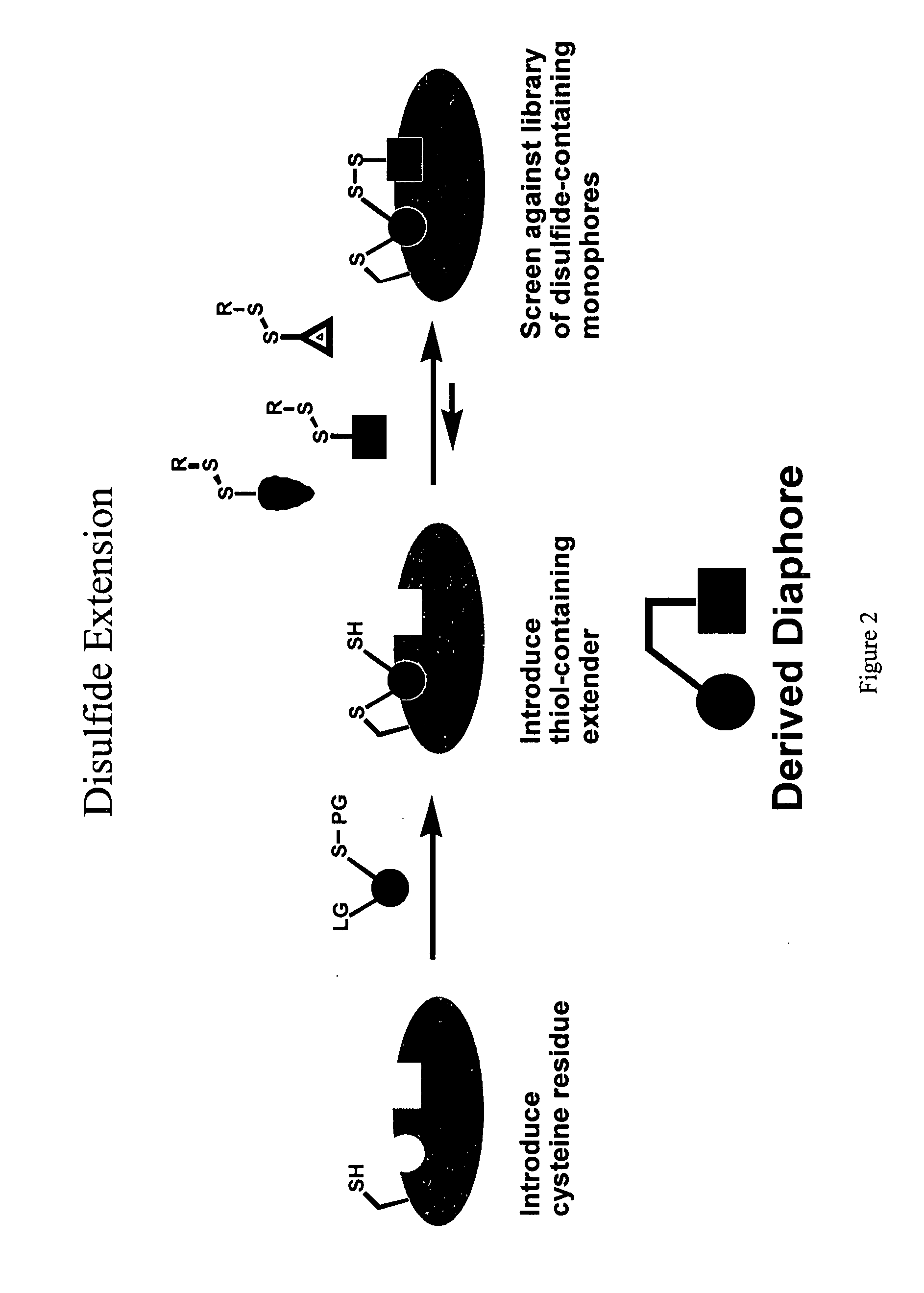Ligands and libraries of ligands
- Summary
- Abstract
- Description
- Claims
- Application Information
AI Technical Summary
Benefits of technology
Problems solved by technology
Method used
Image
Examples
example 1
Disulfide Libraries
[0244]Disulfide libraries were synthesized using standard chemistry from the following classes of compounds: aldehydes, ketones, carboxylic acids, amines, sulfonyl chlorides, isocyanates, and isothiocyanates. For example, the disulfide-containing library members were made from commercially available carboxylic acids and mono-N-(tert-butoxycarbonyl)-protected cystamine (mono-BOC-cystamine) by adapting the method of Parlow and coworkers (Parlow and Normansell, Mol. Diversity. 1: 266-269 [1995]). Briefly, 260 μmol of each carboxylic acid was immobilized onto 130 μmol equivalents of 4-hydroxy-3-nitrobenzophenone on polystyrene resin using 1,3-diisopropylcarbodiimide (DIC) in N,N-dimethylformamide (DMF).
[0245]After 4 hours at room temperature, the resin was rinsed with DMF (×2), dichloromethane (DCM, ×3), and tetrahydrofuran (THF, ×1) to remove uncoupled acid and DIC. The acids were cleaved from the resin via amide formation with 66 μmol of mono-BOC protected cystamine...
example 2
Creating an Amine Linker
[0249]
[0250]To cystamine dihydrochloride (10 g, 444 mmol) was added 5 N NaOH (400 mL) and the suspension stirred until a clear solution formed. The solution was extracted with DCM (6×200 mL) and the combined DCM layers dried (Na2SO4), filtered and concentrated to afford 64.5 g of the desired free base (95%).
[0251]To a solution of the free base (422 mmol) in THF (285 mL) was added dropwise a solution of di-t-butyldicarbonate (0.5 eq, 212 mmol) in THF (212 mL). The reaction was allowed to stir overnight, then concentrated to an oil, taken up in 1 M NaHSO4 (500 mL), and washed with ethylacetate. The aqueous layer was cooled in an ice-bath, treated with 5 M NaOH (200 mL), and the resulting solution immediate washed with DCM. The DCM layers were combined, dried (Na2SO4), filtered and concentrated to afford 11.4 g of the desired mono-Boc cystamine (21%).
example 3
Creating a Carboxylate Linker
[0252]
[0253]To tert-butyl N-(2-mercaptoethyl)carbamate (10 g, 56 mmol) in DMSO (20 mL) was added 3-mercaptopropionic acid (6 g, 57 mmol) and the solution heated at 70 C for 48 hours. The solution was cooled, and the resulting waxy solid dissolved in chloroform (200 mL) and washed with 5% aqueous NaHCO3 (4×50 mL). The aqueous layers were combined, carefully acidified to litmus with 1 N HCl, and washed with CHCl3 (4×50 mL). The organic layers were combined, washed with brine, dried (Na2SO4), concentrated and then purified on silica gel (9 / 1 DCM / MeOH) to afford 1.8 g of a colorless oil (12%).
PUM
| Property | Measurement | Unit |
|---|---|---|
| Mass | aaaaa | aaaaa |
| Volume | aaaaa | aaaaa |
| Volume | aaaaa | aaaaa |
Abstract
Description
Claims
Application Information
 Login to View More
Login to View More - R&D
- Intellectual Property
- Life Sciences
- Materials
- Tech Scout
- Unparalleled Data Quality
- Higher Quality Content
- 60% Fewer Hallucinations
Browse by: Latest US Patents, China's latest patents, Technical Efficacy Thesaurus, Application Domain, Technology Topic, Popular Technical Reports.
© 2025 PatSnap. All rights reserved.Legal|Privacy policy|Modern Slavery Act Transparency Statement|Sitemap|About US| Contact US: help@patsnap.com



